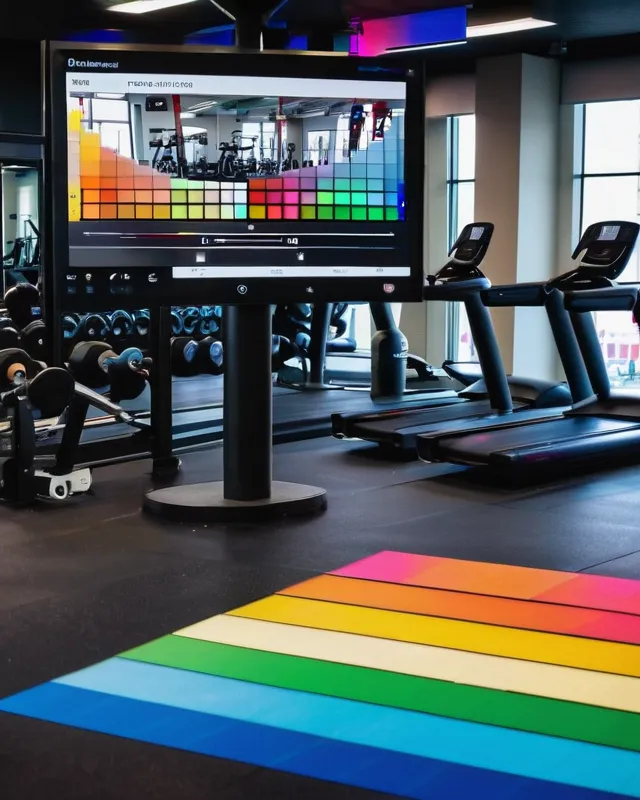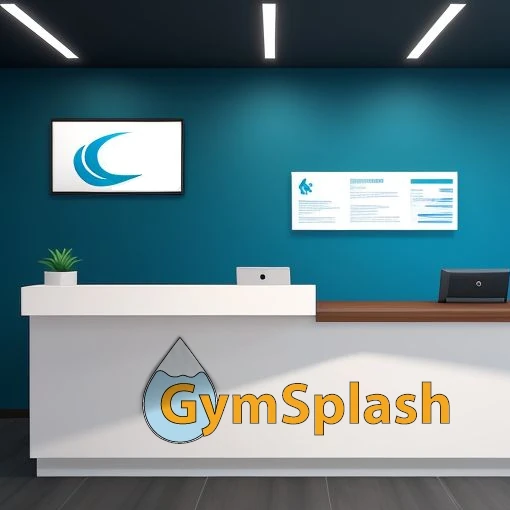Owners of fitness facilities know that marketing a gym can be a beast with many layers. While not all of it may seem particularly hard, many times, a lot more thought, planning, and consideration will go into things than the average person may realize. One of these things, in particular, revolves around gym logo design. On the surface, a logo might seem basic or straightforward, but considering what it conveys, the feelings in sparks, and the brand recognition you desire to get from it, it becomes so much more than “just an icon.”
Business Identity and Gym Logo Design
When it comes to actually designing a gym logo, it helps to start by considering some key elements. First, it’s essential to understand the relationship between your fitness facility’s strategic points of distinction (or unique selling proposition) and your gym’s target audience. By leaning into the overlap of these two aspects of your business, you will better understand the market differentiators your studio offers and the values or needs your ideal clients will fulfill with it.
Additionally, your company’s values influence the overall theme of your brand. Therefore, weaving in aspects of your mission, target audience, and gym specialty can be a great start when designing a gym logo.
Another point to consider when building out your gym, brand identity, and logo is to capture all this information into a style guide for your gym’s brand. This document can help keep branding consistent over time, make working with third-party marketing agencies easier, or give clear instructions to employees taking on creative efforts.
Power of Simplicity
One hard lesson to teach is the power of simplicity in gym logo design. Often, we see owners come in with a great understanding of their business and audience. Still, when they start to draft ideas or elements for their brand’s logo, it can become overly busy, cluttered, or confusing. This tends to happen because they want the logo to convey too much.
If this seems clear as mud, don’t worry—we’ll do our best to explain it. While you (the owner) may want to have a logo for your gym that shows it’s a fitness-based business, highly rated, and brings in elements of your specific expertise, you may already be trying to do too much. So what should you do? Take these points, some fundamental components of your business (like your name, location, etc.), and maybe even some non-concrete feeling-based things you want to associate with your brand, and then list them all out.
Layout all this information in front of you and look for over-arching themes, consistent topics, or themes that address what your brand is about. Once you’ve refined these details into more manageable themes, you can turn these into the simplified elements that may become your brand’s identifying logo.
Finally, you can combine or merge these pieces and play around with different layouts to see if anything stands out. Again, more is not always the best. Even stylizing a single letter (as seen with brands like Facebook or Pioneer, to name two) can be an option if you feel it reflects the feelings and branding you want for your business.
Color and Psychology for Branding
Color is one of the fun topics we like to discuss. At this point, it’s probably safe to assume that everyone has heard of the studies that associate feelings with color and how businesses have tried to incorporate that into their marketing. If this is news to you, though, or if you are interested in more details about color specifics, we highly recommend checking out CoSchedule’s blog, which covers this concept in-depth!
Outside of the nitty-gritty details associated with each color and feelings, it is vital to understand that color is more than what looks cool to you. Too often, we’ve seen brands start with bold or “hardcore” color palettes that don’t jive with their brand’s values or target audience.
That said, you can use the same list of details you used when creating your logo and compare it to a color/feelings chart (like the one linked above). Finding primary and secondary brand colors can help you from an aesthetic standpoint and with your overall marketing efforts when designing your website, collateral, social media pages, and even merchandise.
Once you’ve set your brand colors, it’s wise to document this information in your style guide. To make your life easier when working with graphic art (or using a third party), you can store this information in the following formats: CMYK, RGB, HEX, and PMS.
Symbols and Secondary Elements
Aside from working on your gym’s logo design, you can incorporate other consistent branding elements that aren’t part of your facility’s logo for other pieces (e.g., social posts, website pages, or general marketing pieces). Consistent geometric shapes, related icons, or specific filters/image stylizations can help tie together your branding efforts.
You should not use these elements as a replacement for your primary branding (logo/business name). However, they can help you tie together carousel images in advertisements, mesh your social media header images to your profile icon, or even add consistent stylization to printed materials—to name a few ways.
Finally, if your logo incorporates words, is unusually wide/tall, or contains many details, you can create a secondary logo to use in situations that call for a reduced footprint. Using an alternate variation should assume you can get your complete branding elsewhere within the piece. Again, if you create this logo variation, you should outline when, where, and how to use it in your company’s style guide to avoid issues.
Typography Matters
Your font type is the last topic to consider when designing a logo and building your brand. Like color, fonts can invoke feelings, draw in the eye, or help promote an action. You can even leverage a font as a text-based logo itself. Therefore, you should take this aspect of brand design seriously when developing your materials.
Some points to contemplate when picking a font for gym logo design or branding include:
- Make sure you are legally able to use it
- Test its legibility in various sizes
- Consider your branding goals around feeling
Once you’ve found one or narrowed down your font classes, test it with your other materials. Make sample collateral pieces, website pages, or banners to see how everything meshes. Additionally, you can survey friends, family, or clients reflecting your target audience to help get an outside perspective.
Once again, when you’ve selected a font, document the information in your style guide. This record may come in handy for web designers, graphic artists, or other people/roles who may help with your marketing efforts in the future.
Making A Splash
Branding plays a massive role in marketing a business; fitness facilities or online coaches are no exception. When starting your fitness business (or choosing to redesign), gym logo design is one of the earliest marketing hurdles you must conquer. And while it may seem like an uncomplicated task, many typically find themselves lost or in too deep when they get started. By focusing on your audience, distinction points, and overlapping values, you can combine your ideas and work to emphasize simplification, colors, and fonts in your final brand logo/identity.



